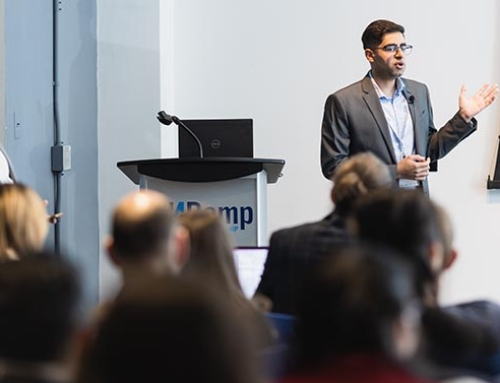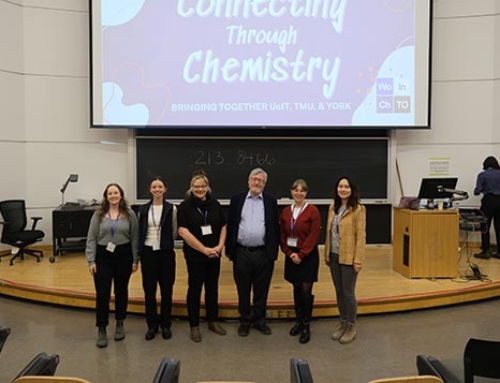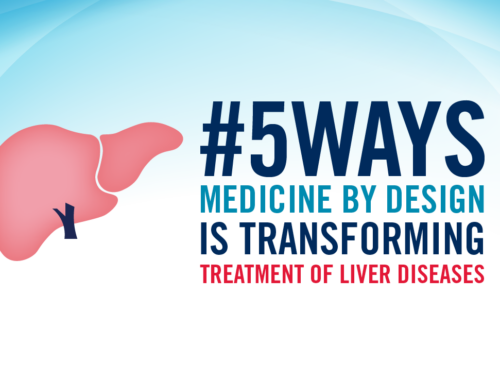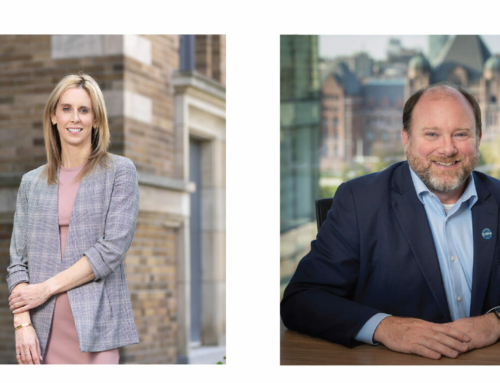
Seven new projects came out of Convergent Working Groups, which brought together a wide range of perspectives. The group pictured above was led by Agostino Pierro (front row, centre), senior associate scientist and pediatric surgeon at The Hospital for Sick Children, and focused on developing a framework for regenerative medicine clinical trials in newborns.
Medicine by Design, a strategic hub for regenerative medicine research at the University of Toronto (U of T) and its affiliated hospitals, has invested nearly $1 million into seven projects aimed at exploring new ideas and possibilities in the field.
The seven selected teams will tackle critical aspects of Medicine by Design’s strategic commitments, which include advancing transformative research and early-stage translation in regenerative medicine; enabling the commercialization of accessible, living therapies at scale; and preparing health systems, clinics, and communities for the implementation of innovative living therapies.
“Medicine by Design’s vision is to continue to strengthen Toronto as a world-leading ecosystem for regenerative medicine. We can only accomplish that by tackling multi-sectoral, multi-disciplinary projects. Projects that, in addition to scientific discovery, include social science, policy development, equity and other aspects that must be addressed in developing disease therapies for the public,” says Michael Sefton, Medicine by Design’s scientific director and a University Professor of biomedical engineering and chemical engineering at U of T.
These projects have emerged from a series of workshops held over the past few months to address research themes aligned with Medicine by Design’s strategic plan.
These Convergent Working Groups brought together diverse perspectives, including both seasoned experts and fresh voices, in contributing to the regenerative medicine field, and integrated convergent disciplines and a varied range of perspectives from groups including patients; genetic counsellors; nurse practitioners; pharmacists; local, Canadian and international neonatal surgeons; industry; and disease foundations.
“Medicine by Design has always integrated teams of experts such as engineers, biologists, scientists and clinicians in strategic projects that are designed to rapidly advance regenerative medicine,” says Sefton. “With the Convergent Working Groups, our focus was on bringing in even more voices — social scientists, policy and equity experts, for example — to integrate the research and innovation ecosystem from end-to-end in these projects.”
The projects encompass a wide range of topics, enhancing the diverse and innovative nature of Medicine by Design’s regenerative medicine research.
Bridging the gap in regenerative medicine for African, Caribbean and Black (ACB) communities

Carl E. James (left) and Istvan Mucsi (right)
In this project, Carl James, a professor in the Faculty of Education at York University, and Istvan Mucsi, a clinician investigator and transplant nephrologist at the Ajmera Transplant Centre, UHN, bring together ACB community members, regenerative medicine professionals and experts from various disciplines to discuss issues of access, representation, racialization and culture in regenerative medicine research and clinical practice. The focus will be on educational content (videos, interviews and podcasts and an online curriculum) geared to ACB communities; cultural safety and anti-Black racism education modules for nephrology professionals in the field of regenerative medicine; and workshops and roundtable discussions on culture, race, ethnicity and anti-Black racism, both virtually and in-person, at professional conferences.
Co-Investigators: Arjun Law (Clinical hematologist University Health Network), Sonya MacParland (Scientist, University Health Network), Paula Neves (Lead, Center for Living Organ Donation, University Health Network), and Nicole Woods (Associate professor, University of Toronto).
Establishing an international innovation community
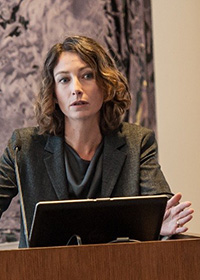
Shiri Breznitz
To address the need for policy frameworks supporting the commercialization of regenerative medicine (e.g. cell and gene) therapies, this project, led by Shiri Breznitz, director of research and professor at the Munk School of Global Affairs & Public Policy, U of T, will analyze relationships and assess the significance of social networks in the creation of innovation ecosystems, specifically focusing on Medicine by Design-funded projects and researchers. The ultimate objective is establishing an intentional innovation framework for regenerative medicine. The resulting economic and social network will be mapped and presented to government, university, hospitals and commercialization agencies to provide insights that can enhance collaboration, strengthen network connections among funded partners and promote continued research, discovery and commercialization in the field.
Clinical trials for newborns

Agostino Pierro
Led by Agostino Pierro, senior associate scientist and pediatric surgeon at The Hospital for Sick Children, this project aims to establish a platform for designing, developing, and coordinating regenerative medicine clinical trials in critically ill newborns. The group will focus on necrotizing enterocolitis (NEC), a life-threatening disease affecting premature infants, with the goal of introducing trials for diseases like NEC in newborns. This work will become a prototype for future regenerative medicine trials in newborns across Canada and other collaborating institutions worldwide.
Co-Investigators: Brian Kalish (Clinician-scientist and neonatologist, The Hospital for Sick Children) and Martin Offringa (Neonatologist and senior scientist, The Hospital for Sick Children).
Electrical stimulation for neural repair

Cindi Morshead
Led by Cindi Morshead, a professor and chair of the division of anatomy in the department of surgery at U of T, this collaboration explores the potential of electrical stimulation as a strategy for treating neurological disorders and injuries by activating neural stem and progenitor cells. Bringing together clinicians and experts from regenerative medicine, electrical engineering, material science, design, and manufacturing, the team will initiate studies to investigate electrical stimulation as a minimally invasive and scalable technology to enhance neuroplasticity and regeneration. The team says, in the long term, their goal is that their advancements will be broadly applicable to the field of regenerative medicine in other tissues.
Co-Investigators: Xilin Liu (Assistant professor, University of Toronto), Bojana Stefanovic (Director, Physical Science Platform, Sunnybrook Research Institute), and Milos Popovic (Director, The KITE Research Institute, University Health Network).
TOGETHER: Gene therapy for rare diseases

James Dowling
Toronto has the potential to be a world leading hub for gene therapy, which aims to correct disease at the genetic level in children with rare and ultra-rare diseases. This collaboration, led by James Dowling, senior scientist, Genetics & Genome Biology at The Hospital for Sick Children, called TOGETHER, aims to advance and to address gaps and challenges in precision gene therapy development to establish Ontario as a leading gene therapy center with The Hospital for Sick Children as the primary hub. This Convergent Working Group aligns with The Hospital for Sick Children’s strategic focus on precision child health, which emphasizes personalized treatments rather than a one-size-fits-all approach.
Co-Investigators: Gregory Costain (Medical geneticist, The Hospital for Sick Children) and Brian Kalish (Neonatologist, The Hospital for Sick Children).
Exploring the regenerative medicine possibilities of mRNA

Mamatha Bhat
Mamatha Bhat, a clinician-scientist and hepatologist at the Ajmera Transplant Centre at UHN, is leading a project that aims to unleash the potential of personalized RNA nanotherapeutics for promoting organ regeneration. In this project, the team will study how a specific type of therapy called nanotherapy can be used to safely promote regeneration in patients with chronic diseases. There is evidence that the therapy can be used to target and reduce tumor growth in animal models of liver cancer. This group will study the application of this concept to regenerative medicine.
Co-Investigators: Gang Zheng (Senior scientist, University Health Network), Jeff Wrana (Senior investigator, Sinai Health System) Elmar Jaeckel (Medical director, Liver Transplant Program, University Health Network), and Bowen Li (Assistant professor, University of Toronto).
Mitochondrial transplant for cell regeneration

Ana Andreazza
This project, co-funded by MITO2i and led by Ana Andreazza, professor at the Faculty of Medicine, University of Toronto, aims to advance mitochondrial transplantation as a regenerative medicine tool. The project’s focus is on developing a stable mitochondrial delivery method using bioengineered materials, and studying mitotransplant efficacy in various tissues using organ-on-a-chip technology. Long-term goals include obtaining preclinical and safety data and conducting larger clinical trials for chronic diseases, specifically mitochondrial rare diseases.
Co-Investigators: Marcelo Cypel (Surgical director, Ajmera Transplant Centre, University Health Network), Milica Radisic (Professor, University of Toronto), Ori Rotstein (Vice-President Research & Innovation, Unity Health), Frank Gu (Professor, University of Toronto), Sowmya Viswanathan (Scientist, University Health Network).



